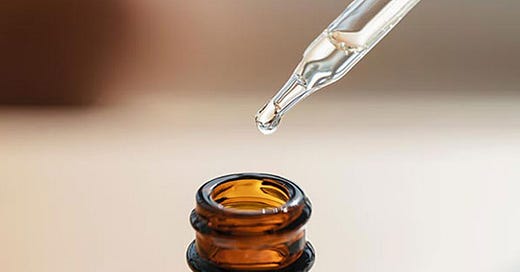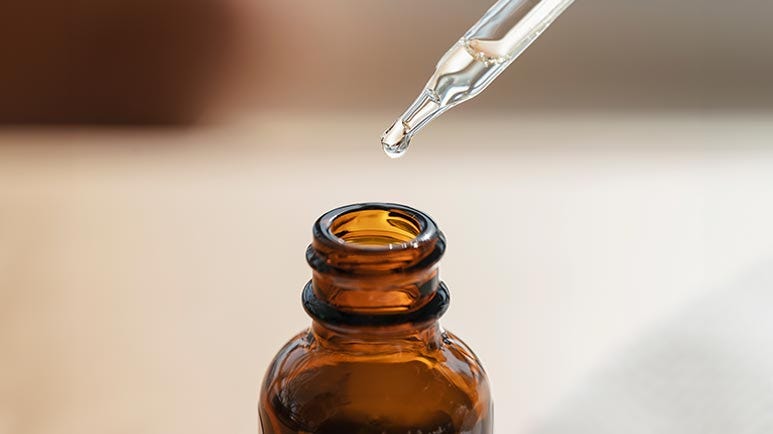The Benefits of Colloidal Silver — Nature’s Potent Weapon Against Superbugs
Recent research reveals how colloidal silver might revolutionize our approach to fighting infections and boosting overall health with its antibacterial and immune-building properties.
STORY AT-A-GLANCE
Colloidal silver, a suspension of silver particles in water, has broad-spectrum antimicrobial properties against bacteria and viruses, including antibiotic-resistant strains, making it a good alternative to conventional antibiotic treatments
Studies have demonstrated colloidal silver's effectiveness in eradicating bacterial biofilms, combating multidrug-resistant bacteria and inhibiting viruses like influenza and HIV
Colloidal silver disrupts bacterial functions by releasing silver ions that bind to proteins and enzymes on bacterial cell surfaces, impairing essential functions and generating reactive oxygen species (ROS) that damage the cells
Beyond its antimicrobial properties, colloidal silver is used for wound healing, treating gastrointestinal diseases and managing eye conditions, though further research is needed
While colloidal silver offers various health benefits, proper usage and safety considerations are important. Choose high-quality true colloidal silver with appropriate nano-sized silver concentrations and avoid silver protein formulas
Colloidal silver, a suspension of tiny silver particles in water, has been valued for its medicinal properties for centuries. Before the discovery of modern antibiotics, silver was an essential remedy for various infections. However, it was early scientific findings in the 20th century that reignited interest in colloidal silver’s uses.
Researchers observed that silver ions protect against a range of bacteria and viruses, including those resistant to conventional treatments. This discovery prompted further exploration into its applications in modern medicine. Today, the increasing prevalence of antibiotic-resistant bacteria underscores the importance of finding alternative treatments, and colloidal silver has emerged as a simple, natural solution.
Recent studies have found that it combats a wide range of pathogens, both gram-negative and gram-positive, and even multidrug-resistant (MDR) bacteria. In addition to antibacterial properties, silver ions also disrupt viruses, making colloidal silver a promising remedy against threats like influenza and HIV. These extensive therapeutic properties make colloidal silver a valuable tool in reinforcing immune function and overall health.
Key Findings on Colloidal Silver’s Antibacterial and Antiviral Properties
Several studies have demonstrated the broad-spectrum antimicrobial capabilities of colloidal silver. One notable study published in the journal Biometals1 explored the efficacy of colloidal silver against biofilms mediated by Mycobacterium abscessus and Mycobacterium avium intracellulare complex (MAIC).
Biofilms are dense communities of bacteria that adhere to surfaces and are notoriously difficult to treat due to their resistance to standard antibiotics. The researchers found that colloidal silver eradicated biofilms at a minimum biofilm eradication concentration (MBEC) values ranging between 0.7 and 22 parts per million (ppm), making it an invaluable tool in managing chronic infections where biofilms play an important role. The authors concluded:2
“GSCS [Green Synthesized Colloidal Silver] in concentrations of 0.7 ppm and 22 ppm kills the M. abscessus and MAIC in planktonic and biofilm forms. The concentration of 3 ppm reduces M. abscessus from within infected macrophages. While further in vivo studies are required, these findings support … GSCS to be used as a topical application against NTM [nontuberculous mycobacteria] SSTIs [skin and soft tissue infection].”
Moreover, a separate study3 from the University Hospital Virgen del Rocío focused on colloidal silver’s effects against MDR bacteria such as Escherichia coli, Staphylococcus aureus and Acinetobacter baumannii. Their findings highlighted that colloidal silver disrupts bacterial enzymes and proteins by binding silver ions to sulfhydryl groups on the cell surface.
This inhibits their essential functions, such as respiration and multiplication, and leads to the generation of reactive oxygen species (ROS), which enhances the bactericidal effect. The researchers observed:4
“Colloidal silver significantly increased the ROS production in gram-negative with respect to gram-positive bacteria at 24 hours of incubation. Altogether, these results suggest that colloidal silver could be an effective treatment for infections caused by MDR gram-negative and gram-positive bacteria.”
This supports an earlier study published in the Journal of Pharmacy and Alternative Medicine,5 found that the bactericidal effect of silver is vastly superior to traditional disinfectants, outperforming phenol and mercuric chloride by significant margins.
Studies have also demonstrated that colloidal silver deactivates viruses like the influenza virus6 and even inhibits HIV.7 These findings emphasize silver’s therapeutic properties beyond its antibacterial effects.
Colloidal Silver’s Mechanisms of Action Against Different Types of Bacteria
Colloidal silver works primarily by releasing silver ions — tiny, charged particles that latch onto proteins and enzymes on the surface of bacterial cells. These proteins and enzymes carry out essential functions that keep the bacteria alive. When silver ions bind to them, their functions are disrupted, causing the bacteria to shut down and die.
This is why colloidal silver is considered a robust antibacterial agent and is effective against different types of bacteria, including antibiotic-resistant strains.8
In addition to binding to bacterial proteins, colloidal silver generates ROS. When bacteria come in contact with silver ions, these chemically reactive molecules are produced, damaging everything inside the bacterial cell, from the DNA to the cell membrane. This is a powerful tactic because it not only disrupts the outer surface of the bacteria but also causes internal damage, making it harder for the bacteria to survive.9
Bacteria are categorized into two main types — gram-positive and gram-negative. The difference lies in their cell wall structure, which affects how silver works on each type. For example, gram-negative bacteria like E. coli have a thinner cell wall that makes them more vulnerable to silver ions.10
These ions destabilize the bacterial cell wall and penetrate the cell more easily, which leads to a higher production of ROS and eventual cell death. On the other hand, gram-positive bacteria like S. aureus have thicker cell walls that shield them from the effects of silver ions. However, even these bacteria are not entirely immune, as the silver ions still manage to bind to their essential proteins and disrupt their functions.11
Understanding these mechanisms allows us to see why colloidal silver is so versatile and effective. Each step, from disrupting proteins to generating ROS, adds up to a potent antibacterial strategy. The different impacts on gram-positive and gram-negative bacteria further enhance its antimicrobial reach.
Other Therapeutic Applications of Colloidal Silver
While colloidal silver is primarily known for its antimicrobial properties, research suggests it offers a range of other health benefits as well. One area where colloidal silver shows promise is in wound healing.
According to the Biometals study, silver-impregnated dressings have shown notable success in inhibiting bacterial growth and treating skin and soft tissue infections, particularly those caused by MDR pathogens. These dressings have been used in clinical settings to treat wounds, significantly reducing infection rates and promoting faster healing, thereby improving patient outcomes.12 The study in the Journal of Pharmacy and Alternative Medicine also noted:13
“Silver and its colloid solutions may also be applied as effective antibacterial agents in direct contact with the surface wounds and inflammation and bacterial infection suppurating portions. The results of the application of colloidal silver solutions show the effectiveness of their use in the treatment of gastrointestinal diseases, cholecystitis, infectious hepatitis, cholangitis, pancreatitis, duodenitis and intestinal infections.
The solution of colloidal silver can also be used for stomach ulcers and duodenal ulcers, because in this case is destroyed bacterium Helicobacter pilori, populating the mucous membranes of the stomach and intestines, responsible for erosive and ulcerative processes in the gastrointestinal tract.”
Some studies suggest it’s effective against viruses, including those responsible for certain types of herpes14 and respiratory infections.15 Interestingly, colloidal silver has also been explored for its benefits in eye health. Some eye drops contain silver compounds due to their antimicrobial properties.16
Safety Considerations and Proper Usage
While colloidal silver has demonstrated numerous health benefits, it is important to understand its proper usage and safety considerations to maximize its advantages while minimizing adverse effects. Keep in mind that not all colloidal silver products are created equal; variations in concentration, particle size and manufacturing processes impact their safety and efficacy.17
It’s essential to choose high-quality colloidal silver products from reputable manufacturers, and make sure to avoid silver protein formulas, as they have large particles, which are known to cause argyria, a condition characterized by a permanent bluish-gray discoloration of the skin and mucous membranes.18 Look for true colloidal silver, as it consists of smaller particles that are more effective and easily eliminated from the body.19
The antimicrobial activity of colloidal silver is typically measured using the minimum inhibitory concentration (MIC) test, which determines the lowest concentration of colloidal silver required to inhibit bacterial growth. Research has shown that different strains of bacteria have varying susceptibilities to colloidal silver.
For instance, MIC values for gram-negative bacteria such as E. coli and P. aeruginosa ranged from 0.5 to over 16 mg/L, while gram-positive bacteria like S. aureus and S. epidermidis had MIC values that were generally higher. These MIC values are essential for determining the appropriate concentrations needed to achieve therapeutic effects without causing toxicity.20
Disclaimer: The entire contents of this website are based upon the opinions of Dr. Mercola, unless otherwise noted. Individual articles are based upon the opinions of the respective author, who retains copyright as marked.
The information on this website is not intended to replace a one-on-one relationship with a qualified health care professional and is not intended as medical advice. It is intended as a sharing of knowledge and information from the research and experience of Dr. Mercola and his community. Dr. Mercola encourages you to make your own health care decisions based upon your research and in partnership with a qualified health care professional. The subscription fee being requested is for access to the articles and information posted on this site, and is not being paid for any individual medical advice.
If you are pregnant, nursing, taking medication, or have a medical condition, consult your health care professional before using products based on this content.





